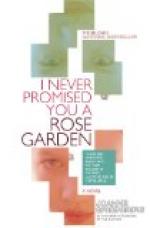Among vines we have the white wisteria, several white clematis, the moon-flower, and other Ipomeas, many climbing and trailing roses, the English polygonum, the star cucumber, etc., so that there is no lack of this harmonizing and modifying colour (that is not a colour after all) if we will but use it intelligently.
Aside from the setting of flower to flower, white has another and wider function. As applied to the broader landscape it is not only a maker of perspective, but it often indicates a picture and fairly pulls it from obscurity, giving the same lifelike roundness that the single white dot lends in portraiture to the correctly tinted but still lifeless eye.
Take for instance a wide field without groups of trees to divide and let it be covered only with grass, no matter how green and luxuriant, and there is a monotonous flatness, that disappears the moment the field is blooming with daisies or snowy wild asters.
Follow the meandering line of a brook through April meadows. Where does the eye pause with the greatest sense of pleasure and restfulness? On the gold of the marsh marigolds edging the water? or on the silver-white plumes of shad-bush that wave and beckon across the marshes, as they stray from moist ground toward the light woods? Could any gay colour whatsoever compete with the snow of May apple orchards?—the fact that the snow is often rose tinged only serving to accentuate the contrasting white.
In the landscape all light tints that at a distance have the value of white are equally to the purpose, and can be used for hedges, boundaries, or what may be called punctuation points. German or English Iris and peonies are two very useful plants for this purpose, flowering in May and June and for the rest of the season holding their substantial, well-set-up foliage. These two plants, if they receive even ordinary good treatment, may also be relied upon for masses of uniform bloom held well above the leaves; and while pure white peonies are a trifle monotonous and glaring unless blended with the blush, rose, salmon, and cream tints, there are any number of white iris both tall and dwarf with either self-toned flowers, or pencilled, feathered, or bordered with a variety of delicate tints, and others equally valuable of pale shades of lilac or yellow, the recurved falls being of a different tint.
Thus does Nature paint her pictures and give us hints to follow, and yet a certain art phase proclaims Nature’s colour combinations crude and rudimentary forsooth!
[Illustration: AN IRIS HEDGE.]
Nature is never crude except through an unsuccessful human attempt to reproduce the uncopyable. Give one of these critics all the colour combinations of the evening sky and let him manipulate them with wires and what a scorched omelet he would make of the most simple and natural sunset!
While Nature does not locate the different colours on the palette to please the eye of man, but to carry out the various steps in the great plan of perpetuation, yet on that score it is all done with a sense of colour value, else why are the blossoms of deep woods, as well as the night-blooming flowers that must lure the moth and insect seekers through the gloom, white or light-coloured?




